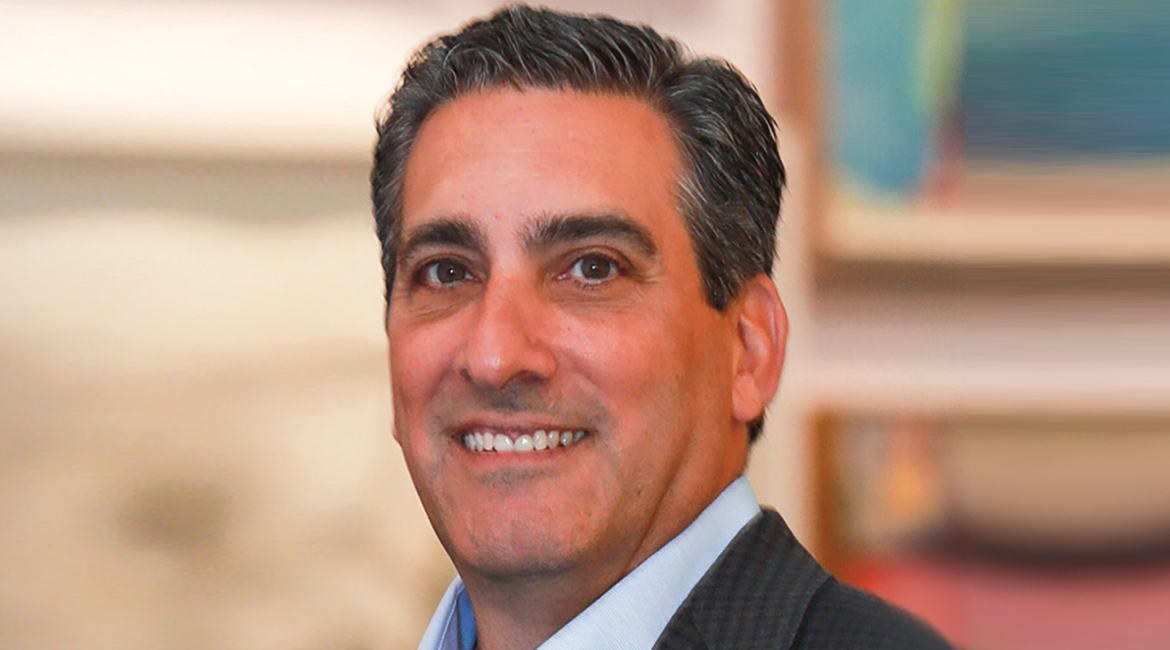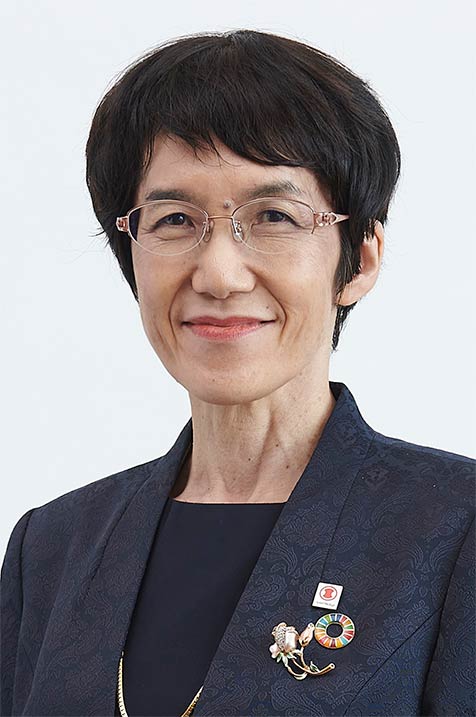President & CEO Sam Errigo discusses initiatives that will accelerate growth for the next 150 years.
This year, Konica Minolta marks a unique milestone in the imaging industry—its 150th anniversary. But this isn’t just any ordinary anniversary for a company whose earliest products were photographic and lithographic materials, followed by cameras in 1903. The company we are most familiar with emerged in 1960 when Minolta (a company whose origins date back to 1928 before merging with Konica in 2003) introduced its first copier.
Over the next 60-plus years, the company has become a top-tier manufacturer of digital imaging technology, and thanks to various acquisitions and research and development initiatives, so much more.
That said, this anniversary is not solely celebratory, although there are plenty of reasons for Konica Minolta and its employees and dealer partners to celebrate. Instead, this milestone is focused on showing gratitude to Konica Minolta’s stakeholders and recognizing its employees—the people responsible for transforming the organization into the company it is today. Indeed, it’s Konica Minolta’s legacy, its mission of “Imaging to the People,” its history of innovation, and its values that the company is acknowledging this year.
Working within those parameters, I interviewed Konica Minolta Business Solutions U.S.A.’s President and Chief Executive Officer Sam Errigo about various topics, including current and future initiatives that will be instrumental in shaping the company’s next 150 years.
The following are Errigo’s comments.
On leveraging technology to improve Konica Minolta’s overall operations
COVID-19 shed light on many potential business risks, mainly human capital. A lot of organizations in the past threw people at problems. As the workforce has changed, throwing people at problems doesn’t work anymore. You can’t survive. I want to reduce the reliance on human capital for mundane tasks. As we look at our business, we must focus on operational efficiencies and ways to use technology to improve overall operations. We have a comprehensive program in place from order entry through cash collection.
Engaging with outside organizations to vet the technology and then apply the proper technology to your business has to be a well-thought-out plan. To date, we have deployed 15 to 20 bots within our organization to eliminate work previously done by people. As you do that, you need proficiencies and people who understand how to write code for bots. One of the products that we sell is Automation Anywhere. We’re also using it internally as a proof point. As we talk to our customers, we show them the results of using these technologies.
An initiative we put in place in our sales organization is a completely automated quote-to-order process. Now, when we write an order, that order comes in electronically to our admin team. We use bots to check orders. I know the order’s correct because it just passed all my internal audits, and we did it electronically. Over the next 12 to 18 months, we’ll see much more technology deployment. What we’re seeing is that we’re not having to rehire. As people retire or transition out of the company, those functions are absorbed because we have the bandwidth within our organization to take that work on, all because automation has been deployed.
The second piece is the customer delivery side. Call it service. The use of AI (artificial intelligence0 is going to be very important along with analytics. If we can develop very good predictive analytics around service so that we are not deploying parts and technicians, that helps keep costs down, allows us to remain competitive, and drives profitability.
We also use AI and analytics to fine-tune our go-to-market strategy, identifying customers with the highest propensity to engage with our products and/or services. We look for what I call the combo package: multifunction, plus managed IT, plus IIM (Intelligent Information Management), plus services. That’s the best customer for us because I don’t have to keep prospecting. I have three or four different opportunities that I can engage in.
On managed IT and cybersecurity
In August 2020, we acquired a company called Depth Security. Their sole focus is cybersecurity. Cybersecurity is top of mind for every CSO (chief security officer). We work with some of the largest companies in the world doing penetration testing for their infrastructure and looking at ways to breach it.
From a managed IT standpoint, cybersecurity will be front and center for years to come just because of the threats and the need for individuals who understand how to deflect those threats. Putting the right tools in place, not only around the infrastructure but the technologies that hang off the infrastructure are entry points for anyone to get into organizations. Cybersecurity and ensuring that you have an organization that understands all those penetration points will be critical moving forward.
On the importance of Konica Minolta’s workforce to be agile and adaptable
Our sales organizations can only absorb so much. You’re never going to be an expert in multifunction products and the next day, a cybersecurity expert; it doesn’t happen. Companies that think that’s a path are fraught with failure. Our model, which has been proven, is that the sales rep’s job is to generate leads. We give them enough education to start a conversation. Then, we surround them with a team of experts.
To track performance, we will move to a business unit model—All Covered, VSS (Video Security Systems), and IIM as business units. We’ll have lead generation from dealers, we’ll have lead generation from direct, but we’ll also have a standalone go-to-market [model] with each business function. We can’t rely solely on direct and dealers for leads. We have to cultivate our own business within our business units.
On the importance of corporate sustainability
When we speak with customers, sustainability is the number one or two things most important to them. What you’re doing as an organization is top of mind with major corporations. We have a great story to tell. We’ve been one of the leaders in using recycled plastics in developing our toner and what we’re doing with our Clean Planet Program and recycling our consumables. We have tools and technology to track our sustainability and deliver reports to our customers, relative to the actual savings and what we’re doing from an environmental standpoint.
The challenge is that you invest all these dollars in the program, and at the end of the day when the customers look at value, are you able to extract a higher value for those investments around sustainability? Are they willing to pay more? You must be very precise in your calculations and conversations to extract the value because there is a cost to our Clean Planet Program and to pick up these consumables and destroy them in an environmentally friendly way. You need the data to explain it to them.
On the secret to Konica Minolta’s longevity and success
Somehow, some way, our company comes together for the greater good of our sales organization and customers and finds a way to get things done. We jump through hoops to satisfy customers. During the toner crisis, I was getting phone calls from customers, and I would personally walk them through to ensure we got them a toner cartridge.
The ability to be accessible and face those challenges head on with honesty, transparency, and helping customers work through issues, that’s core to who we are as an organization. And it trickles all the way down to our dealers. We have strong relationships with our dealers. We have the best dealer network in the industry. They’re some of the best people that I’ve ever worked with. We listen, we work together, we collaborate, and they trust us. That’s why companies succeed.
We have a strong portfolio of products. We’ve been innovators for 150 years. We sometimes stretched the envelope and introduced things that people thought, “Why would you ever do that?” For companies that succeed and have longevity, you have to take calculated risks and make sure that you are innovating, and that you’re thinking through different opportunities.
One of the highlights during my 14 years here was the acquisition of All Covered. We learned a lot along the way, and I would not do anything differently. It’s a healthy business. More importantly, it’s allowing us to get into different areas like cybersecurity. If you’re not in managed IT, how do you talk to customers about cybersecurity? How do you talk to them about security in general? You’re only relegated to what you know, which is MFPs.
The acquisition and building of our IIM business, and now VSS, these are all ancillary businesses that, yeah, they’re small, but they’re growing, and they’re profitable. You need a diverse portfolio. Everything won’t be a success. As long as you have more successes than failures and you’re growing your business, then no apologies.
Since I’ve been here in the U.S., we’ve never missed our revenue or profit objectives. We’ve continued to grow exponentially. We’re constantly awarded accolades for what we do from a customer standpoint, improving our overall DX (digital transformation) strategy. We were among the first to talk about that level of innovation. Being the first in many categories shows that we’re a progressive company.
We have been big promoters of diversity and inclusion and making sure that as an organization, different individuals in different walks of life have the ability to prosper here. It allows us to get different viewpoints on ways to approach the business. That has helped our culture ensure an environment where people can flourish and grow their careers.
On what’s next for Konica Minolta
We have to continue to lead, innovate, and prepare for the next 150 years. That’s on me, Tom Taiko (chairman, Konica Minolta Business Solutions U.S.A.), and the leadership team to identify what we will do for the next 150 years. The next three years will be the next three years. We will grow market share by taking share from competitors, and then focus on high-growth areas.
I’m adding more people to our direct sales organization in key markets. We’re accelerating our DX initiatives. We’re going deeper into our existing base of customers to sell more products and services, which will help us accelerate growth.
The print market is shrinking by 1% or 2% per year. That can be very scary, but it also can be a tremendous opportunity for companies that are ultra-focused on the customer and customer service and have a diversified portfolio to take share.
You’ll have winners and losers. We’re watching the marketplace closely. You can see smaller dealers are being acquired. I talked about this 10 years ago at a dealer meeting when I said, as a dealer, if you do not invest in other areas of the business and think you’re going to ride out your MFP business, you should sell today. Because this is when your EBITDA (Earnings before interest, taxes, depreciation, and amortization) is the best.
This is when there’s less friction in the marketplace, and you’ll get the best value for your company. Unfortunately, the buying environment has changed, and therefore, the value of those businesses is not where the seller wants it to be. It’s more of a buyer’s market. And the buyers are becoming more particular.
Diversifying, to me, is one of the most important things an organization should have done several years ago. It’s never too late, but it’s getting harder and harder to spin up an ancillary business. The ones that have, I applaud them for taking the risk and listening. We don’t have all the answers, but you have many companies that are very, very successful and have built great managed IT businesses that have acquired.





